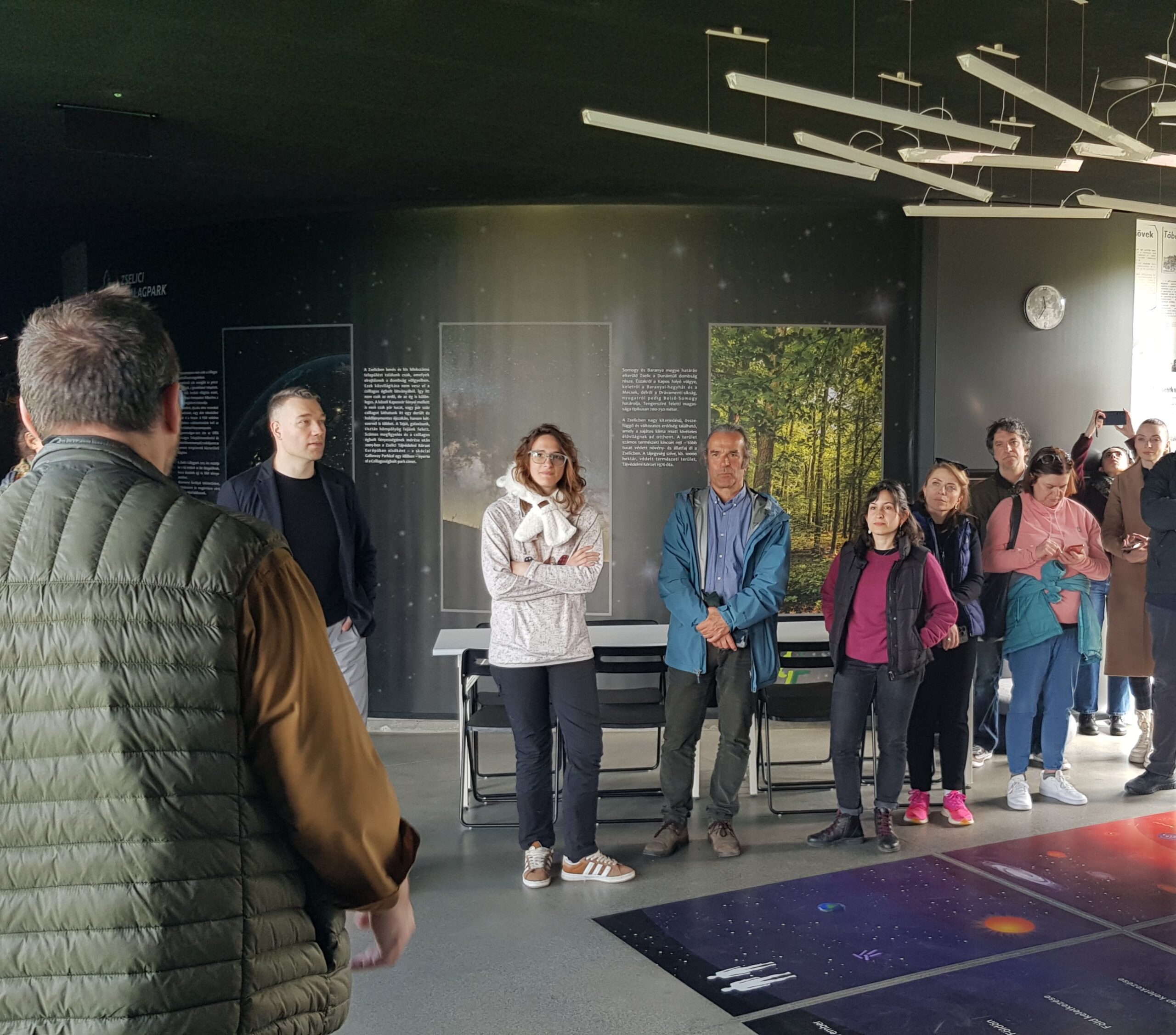In the summertime, when my cousins and I were still children, it was common to see bats flying around our grandparents’ house at dusk.
Quick and agile, the chiropterans chased insects among the mulberry trees, hornbeam, wicker willow, and poplars. At night, they would fall asleep hanging upside down in the attic, right next to us who, having snuck out through the attic windows, would lie on the uncomfortable roof tiles to silently gaze at the stars. Our eyes would wander far, reaching the field that separated the property from the cemetery walls, where fireflies could be glimpsed dancing among the tall grass.
Sometimes, we could hear the foliage being stepped on by hedgehogs searching for hidden treats among the mulch, while the croaking of frogs nestled on the lily pads had already become a customary sound.
In the air, the intense scent of jasmine replaced the acrid smell of the muggy heat, reigning over the morning glory that climbed month after month around the hairy trunk of the palm tree, and over the mirabilis jalapa, which seduced moths with the sweetness of its flowers.
As the years went by, the outdoor lights of houses and the streetlamps gradually lit up the village’s streets, its parking lots, parks, and monuments. I no longer saw fireflies or bats. They had disappeared, and with them, the stars. In their place, a pale sky tinged with a faded orange halo. A haze fed by countless little glows that, seen from the bell tower next to the Cathedral, formed glittering serpentines. A canal that stretched even into the countryside, it’s not carrying water, but electricity for those who wanted or needed it. The others, plants and animals without a voice, have unconsciously suffered the effects of light pollution. Yet, they are not the only ones affected. Human beings are not spared from the negative impacts of nighttime illumination.
Located in northern Italy, the Po Valley is a lush land in the warmer months and a resting patch of mud, shrouded in fog, during the colder seasons. It is not only my homeland but also one of the most polluted areas in the world. Still, its inhabitants are largely unaware that prolonged brightness at night can disrupt circadian rhythms and lead to various health issues, such as insomnia, reduced melatonin production, stress, and depression. The same applies to nocturnal fauna and flora, whose natural rhythms (reproduction, blooming, feeding, and pollination) are thrown off, leading to biodiversity loss and the degradation of ecosystems and their services.
Due to a general lack of awareness about this issue, it is crucial to raise public consciousness on the matter while also building avenues of dialogue with local administrators, lighting companies, and policymakers to design and implement appropriate lighting systems.
The urgency and importance of this lesser-known facet of unsustainable lifestyles, one that transcends national borders, led me to support “DarkerSky4CE” through the IVY (Interreg Volunteer Youth) initiative. This project aims to inform people about light pollution, fostering a positive, solution-oriented attitude to help preserve ecosystems. It also highlights how dark skies, through astrotourism, can serve as a competitive resource for sustainable development in non-urban areas.
The lead partner of the “DarkerSky4CE” project is the National Institute for Astrophysics (INAF), specifically the Astronomical Observatory of Turin (OATo), with whom I collaborated for six months, contributing to various activities.
First, we collected and made available on the Transnational Repository of Light Pollution website data related to measurement instruments and information on the impacts of ALAN (Artificial Light At Night).
At the same time, we began monitoring and analyzing public perceptions and behaviors related to nighttime lighting through the development of the Dynamic Monitoring Tool. This innovative tool enables data collection while simultaneously raising awareness among online users, promoting greater understanding of the impact of artificial lighting and encouraging more sustainable practices.
The interdisciplinary approach combines social sciences, communication, and scientific research, transforming digital channels into a platform for active participation and dialogue among citizens, schools, local governments, and the scientific community.
The next step was to develop a transnational strategy to enhance dark skies, seen as a valuable resource for biodiversity protection. We sought to quantify the economic value of these magical places, ideal for tourism and astronomy, where the pristine night sky still tells its story.
To bring this vision to life, five pilot sites are being implemented across the project’s partner countries, turning strategy into tangible action.
Finally, we helped launch the cross-border network “Sentinel Alliance”, a knowledge-sharing community committed to developing policy recommendations. This broad effort would not be possible without the cooperation of the project’s diverse partners from Austria, Germany, Italy, Poland, Slovenia, and Hungary. Such collaboration is made possible through the international framework of the Interreg programme, which underpins a shared path toward building a “macro-region of dark skies” in Central Europe.

